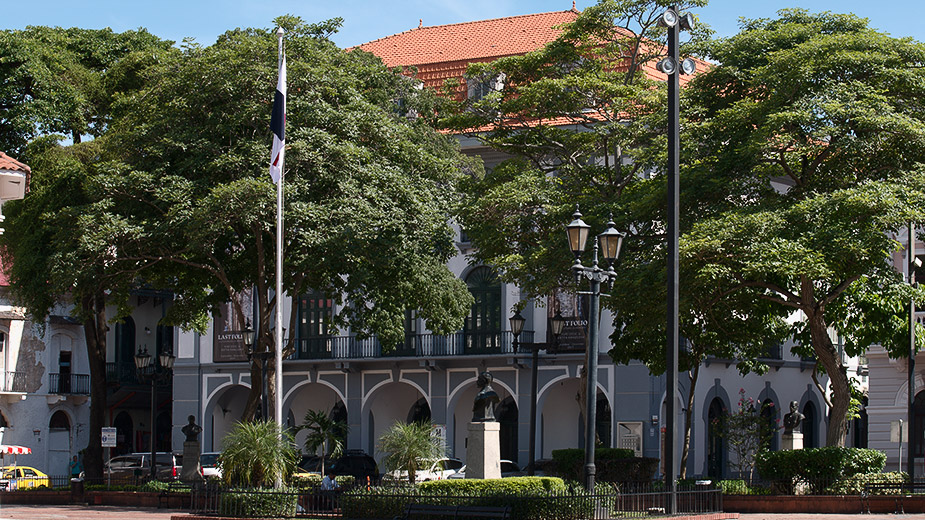

panama canal museum casco antiguo panama city panama
Adjacent to Independence Square and across from Metropolitan Cathedral, the Panama Canal Museum resides in a three-story building dating back to 1874 that once served as the headquarters for the French and US companies engaged in the canal's construction. Despite its age, the building has been meticulously preserved, inside and out.
The museum is limited to the building's second and third floors, offering visitors an outstanding exhibit of Panama’s historic role in acting as an inter-oceanic route from pre-historic times to the realization of the Panama Canal, and the presentation is top-notch. It focuses on everything relating to the railroad and canal, leaving no stone unturned, apart from the recent expansion effort between 2007-2016. (For anyone wanting more information about the expansion period, we recommend you visit the Miraflores Locks Visitor Center museum.)

After passing the reception desk, you'll enter into a quaint atrium. Positioned in the center and on the floor is a large lens/lamp, once part of a lighthouse on Isla Grande, designed by Gustave Eiffel and built-in 1893. To the back and on the right is a staircase leading to the museum's entrance on the second floor. Upon reaching the top, turn left, and off to the right, enter through the sliding door.
It begins with a brief introduction to Panama's pre-Colombian era (you'll find more in-depth coverage of this period at the Panama Viejo Museum). Followed by a peek into how the Isthmus of Panama arose from the seabed, united two continents and divided an ocean, and changed the world's biodiversity forever. (We recommend visiting the Biodiversity Museum on the Amador Causeway for a closer examination of the isthmuses' formation, its initial inhabitants, and the vast array of animal life that once existed and endured.)
***
Among the many topics covered in detail, here are just a few:
***
Throughout the museum, you'll encounter a vast array of physical artifacts, meticulously maintained and most often housed behind glass cabinets. They include, but are not limited to:
***
Most exhibits display descriptive text in Spanish and English, and a select few are interactive. In a few instances, the English version is abridged but concise and more than adequate. There are a few instances, most often relating to newspaper and magazine publications and articles, when English descriptions are absent. They are, however, the exception.
In summary, the Panama Canal is one of the world's most important architectural accomplishments, and the museum does a fabulous job detailing every aspect of its development. I can not recommend it enough; it is well worth a visit.
The Panama Canal Museum resides in the center of Casco Antiguo, adjacent to Independence Square and across from — left of — the Metropolitan Cathedral. You can't miss it! It's a beautiful white building with grey trim. There are no public buses servicing Casco Antiguo.